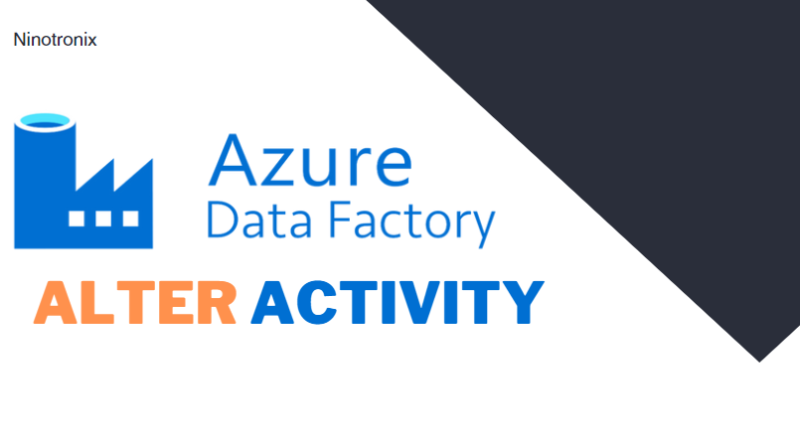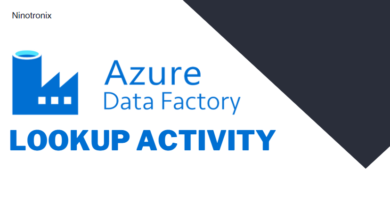Exploring Azure Data Factory Alter Activity: A Comprehensive Guide
Azure Data Factory is a cloud-based data integration service that allows users to create, schedule, and manage data pipelines that move and transform data from various sources to various destinations. The service includes several built-in activities that perform specific functions in a data pipeline. One of these activities is the Alter activity, which allows users to modify the structure of their data using SQL-like syntax. In this guide, we’ll take a closer look at the Azure Data Factory Alter activity and explore how it can be used to manipulate data within a pipeline.
Understanding the Alter Activity
The Alter activity is a data transformation activity in Azure Data Factory that can be used to modify the schema of a data set. This activity can add, drop, rename, or modify columns in a data set, as well as change the data types of columns. It is particularly useful when dealing with semi-structured data, such as JSON or XML, where the structure of the data can vary.
The Alter activity is configured using a JSON-like syntax, similar to SQL. The syntax includes a series of commands that specify the modifications to be made to the data set. These commands include:
Add Column: Adds a new column to the data set.Drop Column: Removes a column from the data set.Rename Column: Renames a column in the data set.Change Column: Changes the data type of a column in the data set.
How to Use the Alter Activity
To use the Alter activity in Azure Data Factory, follow these steps:
- Create a new pipeline in Azure Data Factory.
- Add a source dataset to the pipeline that contains the data to be altered.
- Add an Alter activity to the pipeline.
- Configure the Alter activity using the JSON-like syntax.
- Add a sink dataset to the pipeline that will receive the modified data.
- Save and publish the pipeline.
Example Scenario
Let’s say we have a semi-structured data set in JSON format that includes the following fields: id, name, age, and address. We want to modify the schema of this data set by adding a new field called gender and removing the address field. Here’s how we can achieve this using the Alter activity in Azure Data Factory:
- Create a new pipeline in Azure Data Factory.
- Add a source dataset to the pipeline that contains the original data set.
- Add an Alter activity to the pipeline, and configure it as follows:
jsonCopy code"activities": [
{
"name": "AlterActivity",
"type": "Alter",
"dependsOn": [],
"userProperties": [],
"typeProperties": {
"expression": "SELECT id, name, age, 'Male' AS gender FROM MySourceTable",
"storeSettings": {
"type": "AzureBlobStorageWriteSettings",
"format": {
"type": "JsonFormat",
"filePattern": "output.json",
"dateFormat": "yyyy-MM-dd"
},
"fileName": "output"
}
}
}
]
In this example, we are using a SELECT statement in the Alter activity to create a new column called gender and assign it a value of 'Male'. We are also dropping the address column using the DROP COLUMN command.
- Add a sink dataset to the pipeline that will receive the modified data, and save and publish the pipeline.
Best Practices
When using the Alter activity in Azure Data Factory, it is important to keep the following best practices in mind:
- Test changes in a non-production environment: Before implementing any changes using the Alter activity, it is important to test the changes in a non-production environment. This will help to identify any potential issues and ensure that the changes work as expected.
- Use version control: Use version control to track changes made to the pipeline. This will help to identify who made the changes, when they were made, and what changes were made. It also makes it easier to revert to a previous version of the pipeline if needed.
- Use naming conventions: Use consistent naming conventions for pipeline components such as datasets, linked services, and pipelines. This will make it easier to understand the purpose of each component and to quickly identify the correct component when making changes.
- Document changes: Document any changes made to the pipeline using the Alter activity. This will help to ensure that all team members are aware of the changes and understand their impact.
- Use parameterization: Parameterize the Alter activity to make it more flexible and reusable. This will enable you to easily modify the activity to work with different datasets or linked services without having to create a new activity each time.
- Monitor pipeline performance: Monitor the performance of the pipeline after making changes using the Alter activity. This will help to identify any performance issues and optimize the pipeline for better performance.
- Consider security: Consider the security implications of any changes made using the Alter activity. Ensure that any changes do not compromise the security of the pipeline or the data it processes.
- Plan for maintenance: Plan for maintenance of the pipeline, including any future changes that may be required. This will help to ensure that the pipeline continues to meet the changing needs of the business.



